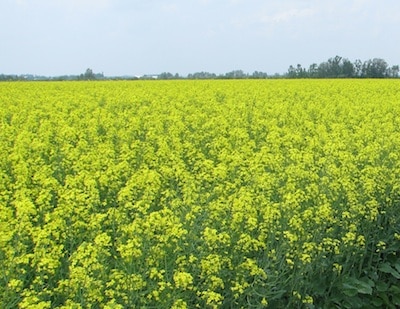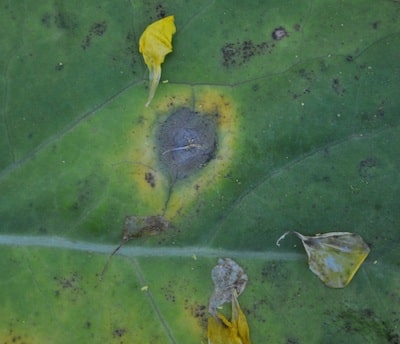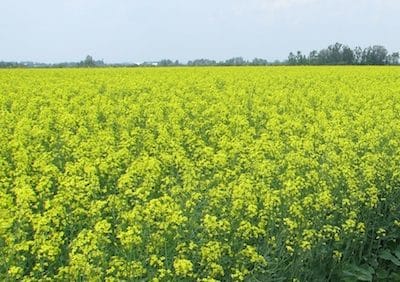

Fungicide labels allow for spray up to 50% flower (some are up to 30%). Spraying this late may work well if the crop seems to be flowering for a long time, or the crop is at uneven maturity — either scenario leading to an extended time at 50% flower. Extended flowering does extend the vulnerable period for sclerotinia stem rot infection.
Also if conditions were not conducive to disease at early flower but moisture has returned and the risk is elevated, spraying at the end of the window may be effective — especially if there is a lot of branching or recovery from heat or drought stress which could extend flowering.
Just got the fungicide, want to spray. Growers who couldn’t get fungicide until later in the flowering window will want to assess the crop before spraying. If the risk was high early and infection has already occurred, a late application won’t cure it. Early infection is also the most costly for yield loss. A late application may stop subsequent infection, but infection that is already present can spread throughout the plant (and from plant to plant in cases of extreme lodging), reducing the effectiveness of this late application. However, if growers just received the product and infection conditions are peaking, a late application could pay off.
Cautions with late applications. Applications after 50% flower are not on fungicide labels, and may be inside the preharvest interval for some fungicides. Second, late applications are not as effective. After 50% flower, most of the flowering is on side branches. These petals tend to drop onto upper leaves and side branches, causing minimal damage to the main stem. However, if the crop lodges, infection on side branches can spread to main stems.
Spraying hailed crop. Canola beat down by hail at early flowering can recover, and start to bolt and reflower again. In that case, growers may see a benefit from spraying for sclerotinia again if yield potential is above 25-30 bushels per acre, and conditions are moist (rain, humidity and/or dew). Keep in mind that some fungicides are registered for only one application per year. If you already sprayed that product, switch to a different one.
Other recent Canola Watch articles on sclerotinia:
Heat alone will not eliminate sclerotinia stem rot risk
When to split-apply fungicide
How to assess the sclerotinia stem rot risk
